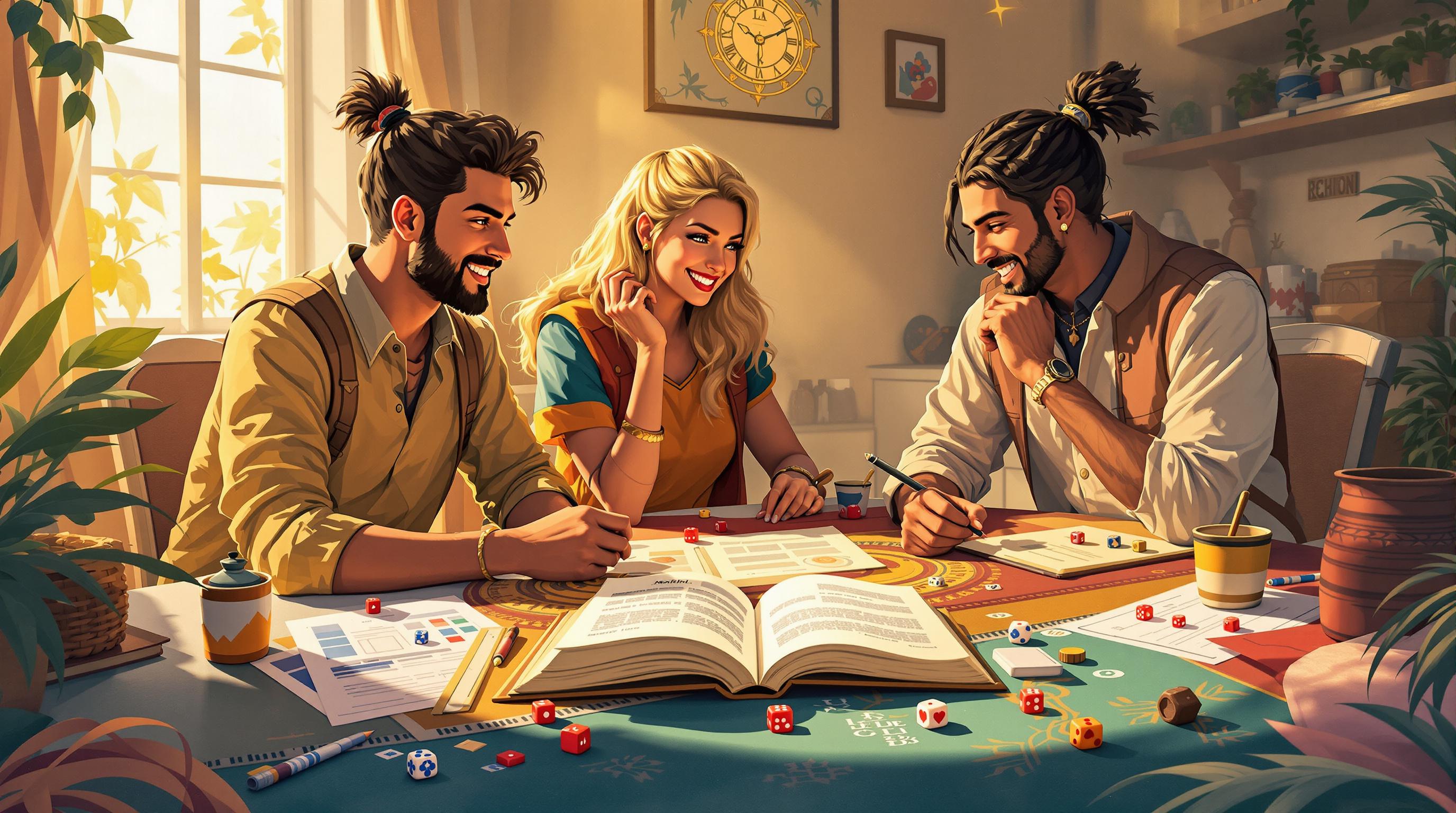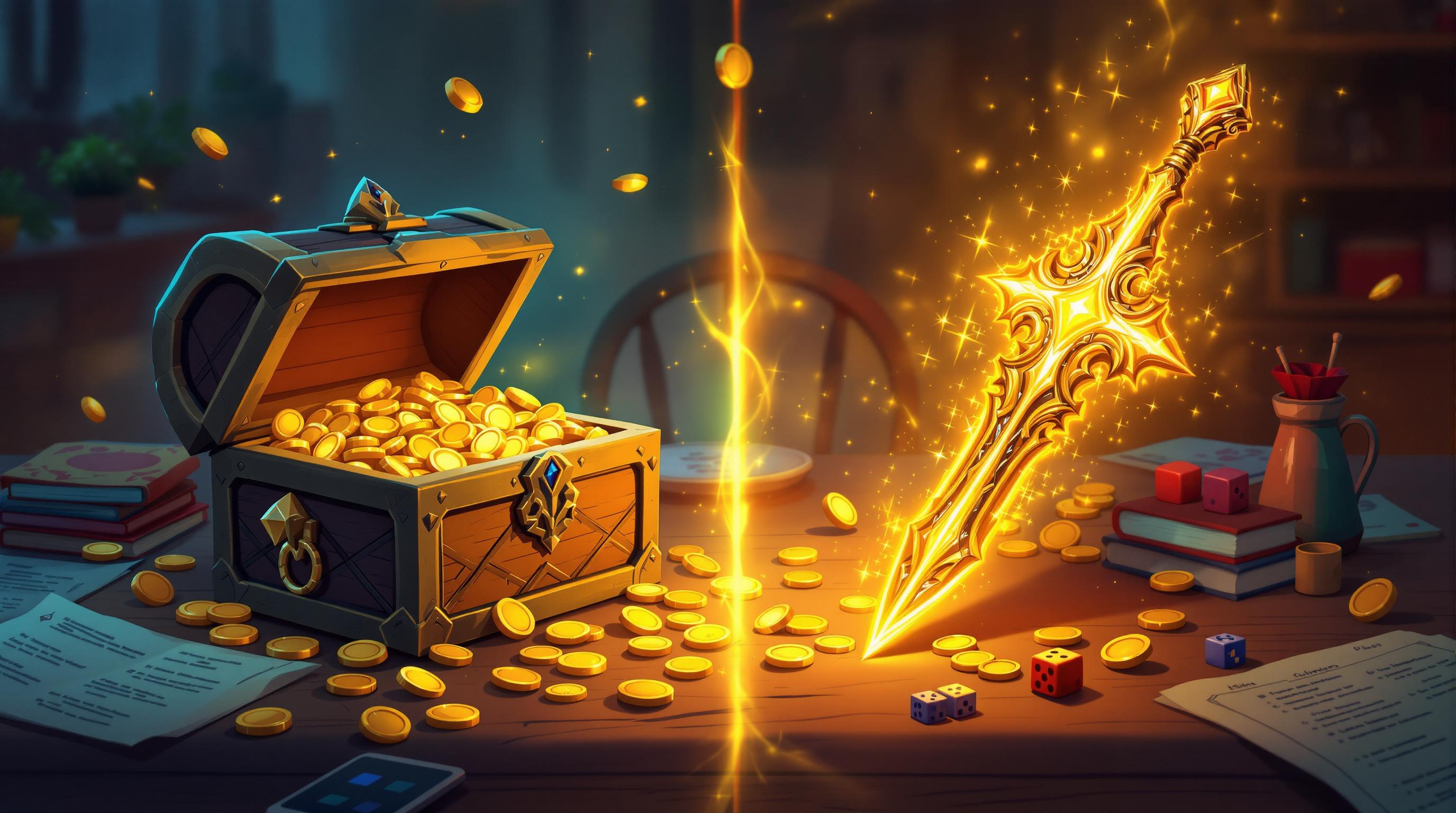Want to make your TTRPG sessions better? Start by asking your players for feedback. Their input can help improve storytelling, game mechanics, and overall session flow. Here’s how you can do it effectively:
- Stars and Wishes: Ask players to share one thing they loved (Star) and one thing they’d like to see improved (Wish).
- Surveys: Use tools like Google Forms for detailed feedback on pacing, mechanics, and story.
- One-on-One Chats: Have private conversations to uncover deeper preferences or concerns.
Key Tip: Create a safe space for open, honest feedback by using neutral language and listening without judgment.
Seeking Player Feedback
Methods for Collecting Player Feedback
Here are three practical ways to turn player feedback into useful insights:
Using the Stars and Wishes Method
The Stars and Wishes method is a simple way to gather immediate feedback after a session. It encourages players to highlight what they liked and suggest areas for improvement.
Here’s how it works:
- Ask each player to share one "star" - something they enjoyed during the session.
- Follow up by asking for one "wish" - something they’d like to see in future sessions.
- Keep the conversation short but meaningful.
"Smart game masters ask for feedback at the end of every session." - TTRPG University [2]
Surveys and Questionnaires
Surveys are a great way to collect detailed feedback at a player's own pace. Tools like Google Forms or SurveyMonkey can help you create questionnaires that cover a variety of topics.
Incorporate different question types, such as:
- Rating scales for aspects like combat pacing.
- Multiple-choice questions to gauge preferred playstyle balance.
- Open-ended fields for story suggestions or other thoughts.
Focus on specific session elements like character development or combat balance to get actionable responses.
One-on-One Feedback Sessions
Private feedback sessions offer a comfortable setting for players to share their thoughts more openly. These one-on-one conversations can reveal unspoken concerns or preferences and help align character goals with the campaign’s direction.
These deeper insights naturally guide the next step - deciding which feedback to act on and how to implement it.
Key Questions for Gathering Feedback
Getting useful feedback starts with asking the right questions. Here’s how you can approach it:
Questions About Gameplay and Mechanics
Drill down into specifics to better understand how the mechanics are working. Examples include:
- "How did combat pacing feel during the forest ambush?"
- "Were any rules unclear during the tavern scene?"
- "Did challenges match your character's abilities?"
- "How balanced did the rewards and loot distribution feel?"
- "What aspects of the game mechanics would you like to see used more often?"
These targeted questions can be paired with broader ones to get a complete picture of the player's experience.
Open-Ended Questions for Broader Insights
While specific questions are helpful, open-ended ones often uncover unexpected details about what players enjoyed - or didn’t. Encourage players to share their thoughts freely with questions like:
- "What moment from today's session stands out as most memorable?"
- "How did you feel about your character's development opportunities?"
- "Which story elements would you like to explore further?"
- "What aspects of the session sparked the most engagement from you?"
- "If you could change one thing about today's session, what would it be?"
Keep the tone neutral so players feel comfortable being honest.
For longer campaigns, organizing questions by category can help:
- Story: "Which plot threads interest you most?"
- Character: "What goals would you like to pursue?"
- Group dynamics: "How well did the party collaborate?"
sbb-itb-b8b00a5
Using Feedback to Improve Future Sessions
Analyzing and Prioritizing Feedback
Collecting feedback is just the beginning - what really matters is how you analyze and act on it. To make feedback useful, organize player responses into a feedback matrix with categories like "must-haves," "nice-to-haves," and "not feasible" [1]. This approach helps you focus on changes that will make the biggest difference for your group's experience.
When reviewing feedback, pay attention to:
- Recurring Themes: If multiple players bring up similar issues, like pacing or certain mechanics, these should be addressed first.
- Group-Wide Impact: Focus on changes that improve the experience for everyone, not just individual players.
- Feasibility: Consider what adjustments are realistic within the structure of your game.
This structured method keeps feedback actionable and allows you to track patterns over time.
Implementing Changes Based on Feedback
Once you've identified priorities, approach implementation thoughtfully. Use the following phased strategy to introduce changes:
| Phase | Key Actions |
|---|---|
| Planning | Identify top priorities from the feedback matrix. |
| Communication | Present proposed changes to the group for input. |
| Implementation | Introduce changes gradually, testing one element at a time. |
| Evaluation | Gather ongoing feedback to assess the impact. |
Major adjustments should be discussed during early sessions (like Session 0 or 1) to ensure everyone's expectations are aligned [1]. This creates a shared understanding and sets the stage for smoother sessions.
Keep track of which changes you’ve implemented and monitor their effects. Regular post-implementation check-ins with players help confirm whether the adjustments are working and guide further refinements. This cycle of feedback and improvement keeps your game evolving in a way that benefits everyone.
Additional Resources for TTRPG Enthusiasts
Sometimes, feedback from players goes beyond minor tweaks and calls for more substantial changes. The TTRPG Games Directory is a helpful tool for addressing these deeper adjustments, offering system-level alternatives and solutions based on player input.
TTRPG Games Directory

The TTRPG Games Directory is a go-to resource for Game Masters aiming to tailor their sessions to better meet player expectations. Here's how it can help:
- Explore New Games: When your current system isn't clicking with players, find fresh options sorted by mechanics and themes.
- Dive Into Game Mechanics: Learn about different approaches to gameplay elements that players might want improved.
- Compare Systems: Evaluate similar games to find ones that align more closely with your group's interests.
| Feedback Area | How the Directory Can Help |
|---|---|
| Combat Mechanics | Locate games with refined or alternative combat systems. |
| Narrative Focus | Search for games centered around storytelling. |
| Player Engagement | Discover systems with built-in feedback tools. |
| Session Structure | Compare formats and pacing options for better flow. |
- Online Communities: Connect with forums where Game Masters share strategies for gathering and implementing feedback [3].
Using these resources can make it easier to adapt your game while keeping your players' preferences in mind.
Conclusion: Improving Sessions Through Feedback
Player feedback can elevate TTRPG experiences. Create an environment where players feel comfortable sharing their thoughts. Techniques like Stars and Wishes offer quick insights, while tools like surveys and one-on-one discussions help uncover deeper preferences.
By blending immediate feedback methods like Stars and Wishes with more detailed approaches discussed earlier, Game Masters can create a well-rounded system for improving their sessions. These three core methods make it easier to gather, analyze, and act on player input effectively.
To make meaningful changes, focus on recurring themes and address common concerns first. Regularly collecting, analyzing, and implementing feedback ensures steady progress in campaign development.
When players notice their suggestions shaping future sessions, it builds trust and fosters open communication. This cycle of feedback and improvement turns good gaming experiences into truly memorable ones, strengthening the connection between Game Masters and players.
FAQs
How to get feedback as a DM?
Getting useful feedback as a Dungeon Master takes some planning and the right approach. Here are a few ways to make the process smoother and more productive:
Create a Comfortable Environment
Make sure players feel comfortable sharing their thoughts. Set the tone by emphasizing that feedback is about improving the game for everyone.
Ask Specific Questions
General questions like "How was the session?" can lead to vague answers. Instead, ask focused questions such as:
- "What part of the story did you enjoy the most?"
- "Was there anything that felt unclear or confusing?"
Use a Simple Feedback Structure
Organize feedback discussions to keep them clear and constructive. Here's a quick framework:
| Phase | What to Do |
|---|---|
| Opening | Highlight what went well |
| Discussion | Talk about specific parts of the session |
| Closing | Gather ideas for improvement |
Extra Tips for Feedback Success
- Keep a record of recurring feedback to spot patterns.
- Offer private ways for players to share thoughts if they’re hesitant to speak up during group discussions.
These steps can help you grow as a DM while keeping the game enjoyable for everyone.


